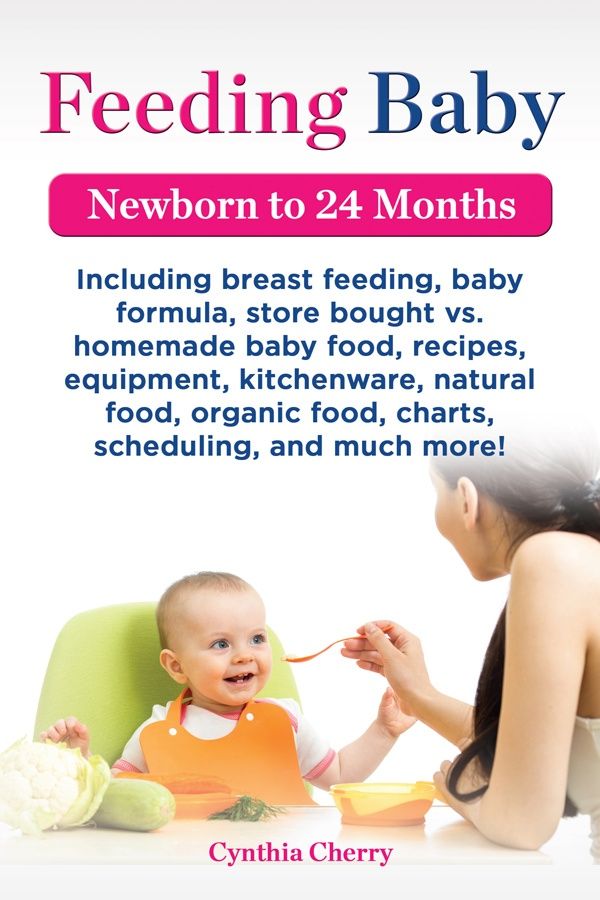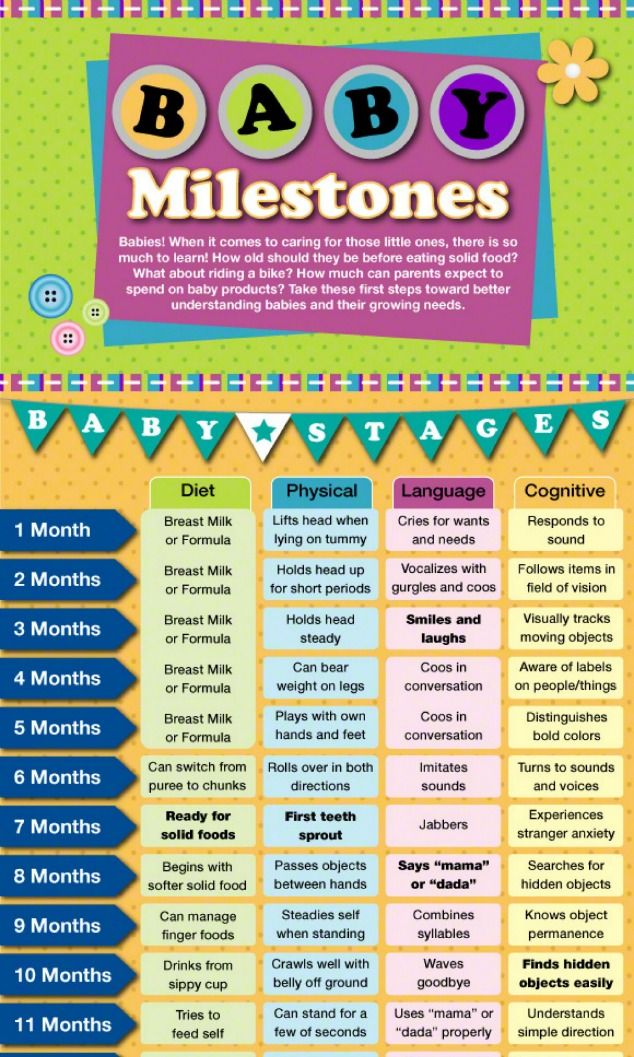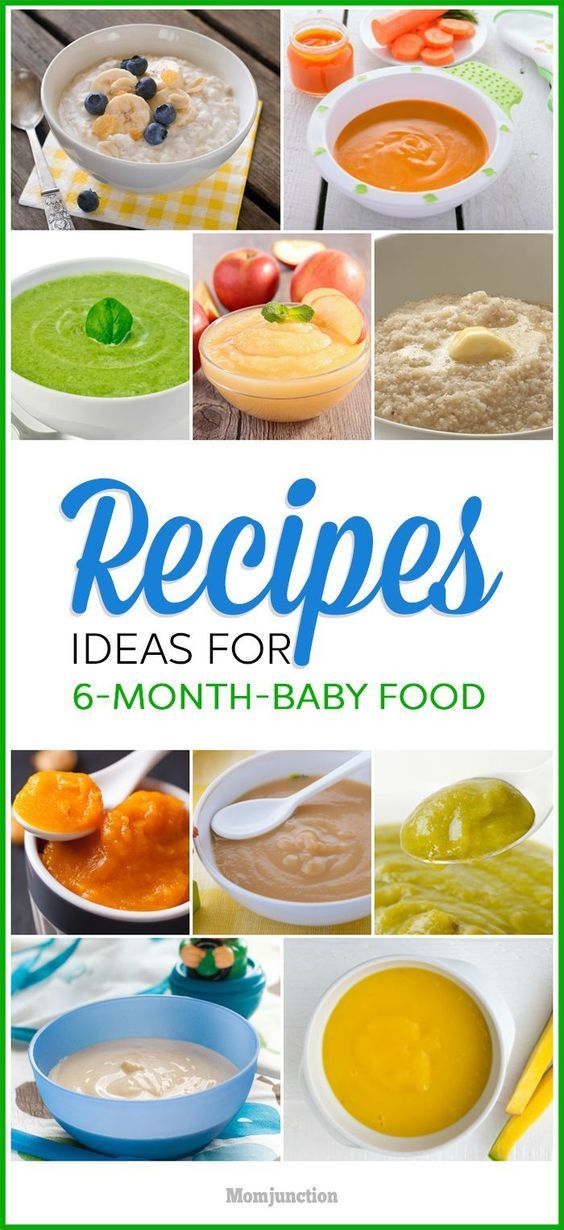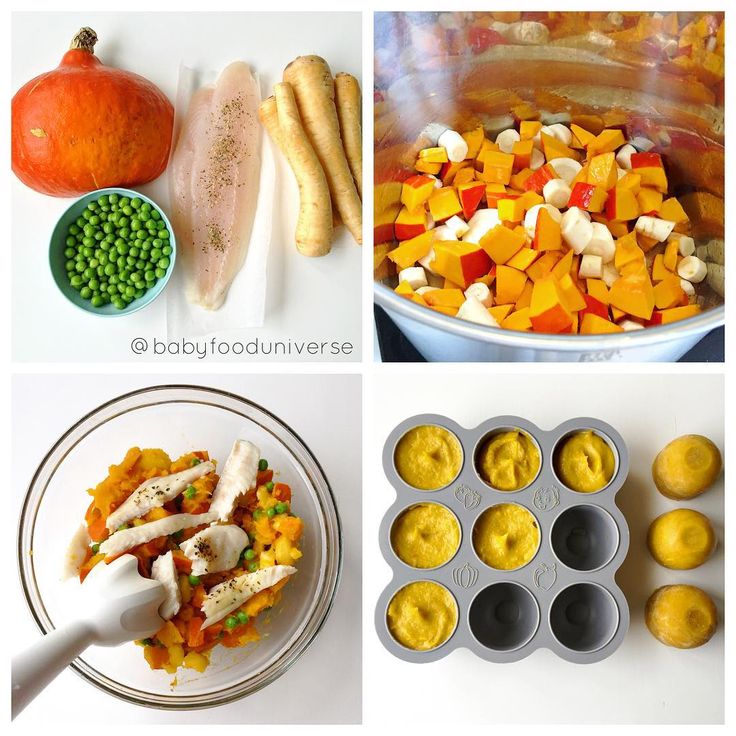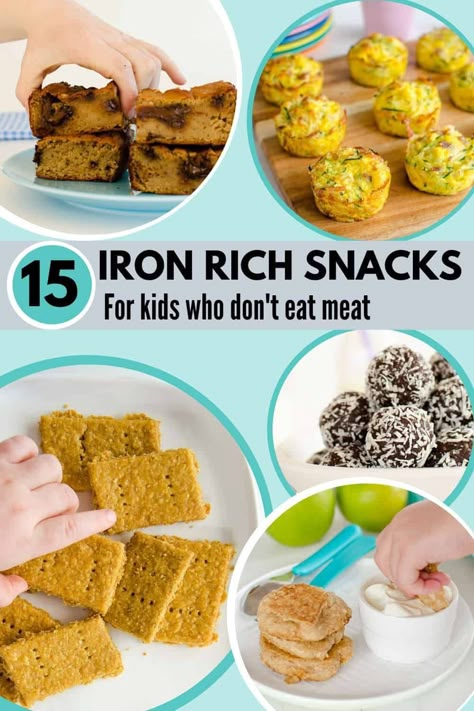When to start feeding baby cereal with a spoon
When Can You Start Feeding Your Baby Rice Cereal
Adding solid foods to your baby’s diet is a big milestone, and you may be wondering when to begin the process and what foods to start with. In the past, single grain infant cereals have been the traditional first choice when transitioning to solid foods, with rice cereal being one of the more popular ones. These days, though it is still OK to start with cereal, experts say that there is no evidence that introducing foods in a certain order provides any advantage for your baby (though babies do tend to like cereal).
Keep in mind that experts highly recommend giving rice cereal as part of a mixed diet of single ingredient choices, rather than as an exclusive food.
Find out how to safely give rice cereal to your baby, and what other infant cereals you might want to give instead.
What Is Rice Cereal?
Rice cereal for babies has been a traditional first food for infants who are being introduced to eating solids. The most common type is a dry powdered cereal, to which liquid is added to form an oatmeal-like consistency, but it can also be purchased premixed. It's one of the single grain cereals that have been recommended for infants when they start on solid foods.
Is Rice Cereal Safe for Your Baby to Eat?
It’s OK to include rice cereal in your baby’s diet as long as you’re not exclusively feeding your baby rice cereal.
The reason experts recommend rice cereal be limited is because of the naturally occurring levels of inorganic arsenic in rice (in this case inorganic refers to the arsenic’s specific chemical compound bound with carbon).
As rice is grown, the plant absorbs more inorganic arsenic from its environment compared to other crops. Arsenic is a naturally occurring element that can enter the food supply through water, soil, or air.
When body weight is considered, a baby’s intake of inorganic arsenic through rice cereal could be three times more than an adult’s.![]() Eating too much rice cereal as an infant can cause long-term health problems.
Eating too much rice cereal as an infant can cause long-term health problems.
What Infant Cereals Can You Give Your Baby Instead of Rice Cereal?
Instead of rice cereal, you can offer another single grain infant cereal such as oat or barley cereal. You can find many of these infant cereals in premixed or dry versions to which you would add breast milk, formula, or water to create a consistency that your baby will like.
Look for cereals that are specifically made for babies because they will be fortified with nutrients like iron and zinc that your baby needs.
Just remember that when introducing new foods — including different types of infant cereals — do so gradually, offering one new food at a time, and then waiting a couple of days before adding another food, to watch for any possible allergic reactions. Once your baby has become accustomed to eating solids, feel free to offer a variety of single ingredient, soft foods.![]()
How Many Times a Day Should You Feed Your Baby Infant Cereal?
When your little one is just starting on solids, spoon-feed your baby a small amount of infant cereal once or twice a day, ideally just after he’s been bottle-fed or breastfed. Start with one or two teaspoons of cereal so that your baby can get accustomed to this new food.
Eventually you can introduce other foods one at a time—and you can even make your baby’s food at home.
Are Other Rice Products Safe to Give Your Baby?
Not necessarily. You can give rice to your older baby as part of a varied and balanced diet. However, it’s best to avoid certain rice-based products like rice syrup, often used as a sweetener in processed foods, as well as rice milk, which should not be used as a substitute for cow's milk.
If your child has turned 1 and is sensitive or allergic to cow’s milk, your healthcare provider will be able to recommend milk alternatives if needed, and can also weigh in on any rice products you’re considering giving.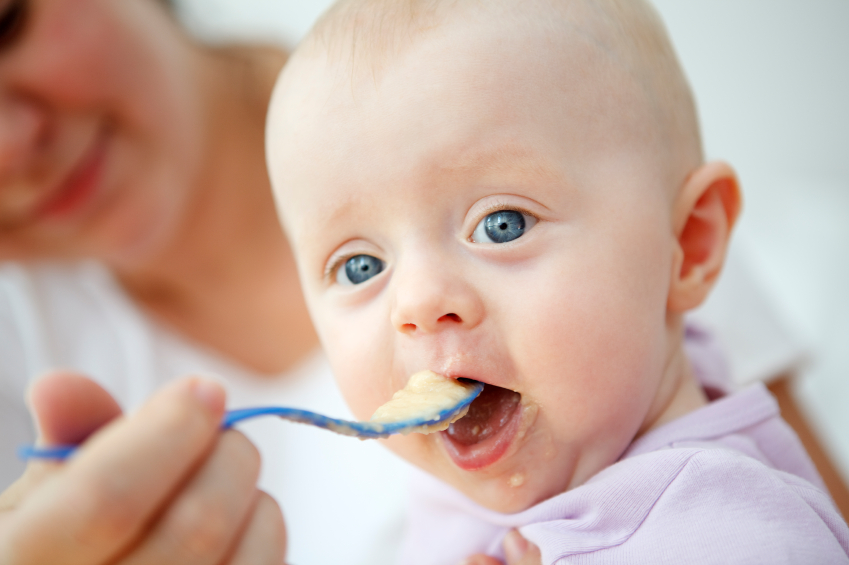
At What Age Should You Start Feeding Your Baby Infant Cereals?
For most babies, 6 months is a good age to start to introduce solid foods, which can include infant cereals. Breast milk or formula will continue to provide most of your baby's nutrition for the first 12 months.
Waiting until this age is important because by this point your baby would have outgrown a natural reflex that all babies are born with that causes them to push their tongue against anything inserted into their mouths. Most babies grow out of this tongue thrust reflex between 4 and 5 months.
Can You Give a Baby Younger Than 6 Months Infant Cereals?
Most babies are not ready for solid foods, including infant cereals, until they are about 6 months old, though some babies could be ready a month or two earlier. Experts recommend that babies be breastfed or bottle-fed (with expressed breast milk or formula until 6 months of age.
How Do You Prepare Dry Infant Cereal for Your Baby?
If you’re using dry cereal, mix one tablespoon of dry cereal with four tablespoons of breast milk, formula, or water; or follow the recommended directions on the container.
Be sure not serve the cereal from a bottle for reasons we mention in the next section. Gradually, you can add less liquid to the dry cereal to find a thickness your baby likes.
Can You Feed Your Baby Cereal in a Bottle?
Although this might be a practice you’ve heard of, don't feed your baby cereal in a bottle unless your baby’s healthcare provider says otherwise. Feeding your baby through a bottle can lead to unnecessary calories—she may consume more food than she actually needs.
Although rice cereal may have been a popular choice, experts now say there are other infant cereals and first foods that may be safer for your baby. If you’re ever unsure about which infant cereal to give, or need advice about expanding your baby's menu, reach out to your baby’s healthcare provider for advice.
If you’re ever unsure about which infant cereal to give, or need advice about expanding your baby's menu, reach out to your baby’s healthcare provider for advice.
As your baby transitions to solid foods, you deserve lots of rewards for all those diaper changes. Download the Pampers Club app to get rewards for all your Pampers purchases.
How we wrote this article The information in this article is based on the expert advice found in trusted medical and government sources, such as the American Academy of Pediatrics and the American College of Obstetricians and Gynecologists. You can find a full list of sources used for this article below. The content on this page should not replace professional medical advice. Always consult medical professionals for full diagnosis and treatment.
When Can My Baby Start Eating Solid Foods? (for Parents)
A friend just started giving her 3-month-old applesauce and rice cereal. My son is just 2 weeks younger than hers, and I am wondering if I should be introducing solids soon too. When should I start?
When should I start?
– Taylor
Doctors recommend waiting until a baby is about 6 months old to start solid foods. Starting before 4 months is not recommended.
At about 6 months, babies need the added nutrition — such as iron and zinc — that solid foods provide. It’s also the right time to introduce your infant to new tastes and textures.
Some babies may be ready for solids sooner than 6 months, but don't start until your baby is at least 4 months old.
How do you know it’s the right time to start solid foods? Here are some signs that babies are ready:
- They have good head and neck control and sit up in a high chair.
- They're interested in foods. For example, they may watch others eat, reach for food, and open their mouths when food approaches.
- They don’t push food out of their mouths, which is a natural tongue reflex that disappears when they’re between 4–6 months old.
- They weigh twice their birth weight, or close to it.

Talk to your doctor about the right time to start solid foods.
How Should I Start Solids?
When the time is right, you can start with a single-grain, iron-fortified baby cereal. Start with 1 or 2 tablespoons of cereal mixed with breast milk, formula, or water. Feed your baby with a small baby spoon. Don’t add cereal or other food to a baby's bottle because it can lead to too much weight gain. Let your baby practice eating from a spoon and learn to stop when full.
When your baby gets the hang of eating the first food, introduce others, such as puréed meat, fruits, vegetables, beans, lentils, or yogurt. Try one food at a time and wait a few days before trying something else new to make sure your baby doesn't have an allergic reaction.
Foods that are more likely to cause allergies can be among the foods you introduce to your baby. These include peanuts, eggs, cow’s milk, seafood, nuts, wheat, and soy. Waiting to start these foods does not prevent food allergies. Talk to your doctor if you are concerned about food allergies, especially if any close family members have allergies, food allergies, or allergy-related conditions, like eczema or asthma.
Talk to your doctor if you are concerned about food allergies, especially if any close family members have allergies, food allergies, or allergy-related conditions, like eczema or asthma.
Infants with severe eczema or egg allergies are more likely to have allergies to peanuts. Talk to your doctor about how and when to introduce these foods to your child.
When starting your baby on solids, avoid:
- foods with added sugars and no-calorie sweeteners
- high-sodium foods
- honey, until after the first birthday. It can cause botulism in babies.
- unpasteurized juice, milk, yogurt, or cheese
- regular cow's milk or soy drinks before 12 months instead of breast milk or formula. It’s OK to offer pasteurized yogurt and cheese.
- foods that may cause choking, such as hot dogs, raw carrots, grapes, popcorn, and nuts
Also, do not give fruit juices to infants younger than 12 months old.
Over the next few months, introduce a variety of foods from all the food groups.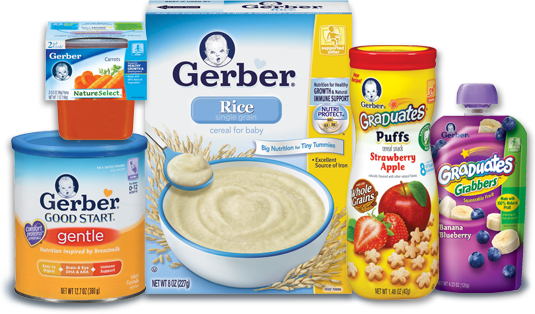 If your baby doesn't seem to like something, don’t give up. It can take 8 to 10 tries or more before babies learn to like new foods.
If your baby doesn't seem to like something, don’t give up. It can take 8 to 10 tries or more before babies learn to like new foods.
Reviewed by: Mary L. Gavin, MD
Date reviewed: February 2021
how to introduce, with what to start the first feeding of a child, the correct sequence of complementary foods by months
Contents: Hide
- Basic rules for introducing porridge into the baby's menu
- How to prepare porridge for baby foods
How to introduce porridge into complementary foods
According to the recommendations of the Union of Pediatricians of Russia, it is recommended to introduce complementary foods in the range of 4-6 months. At this time, the growing body needs more and more vitamins and minerals every week. But the later introduction of complementary foods can cause a pronounced deficiency of essential micronutrients. In addition, the enzymatic system of the gastrointestinal tract of the baby by this age is already ready to accept new food, and he himself begins to show interest in food. nine0021
nine0021
Expansion of the children's menu helps to provide an actively growing organism with many useful substances, the need for which can no longer be covered by mother's milk or an adapted formula. Also, complementary foods contribute to the formation of taste, mastering the skill of chewing and simply satisfies the curiosity of the crumbs, who are already actively interested in what their parents eat. Almost all experts agree that one of the ideal options for the first adult food for a child is cereal. Various cereals can have a beneficial effect on the baby's digestive system and serve as a valuable additional source of vitamins, minerals and energy necessary for the harmonious development of the baby's organs and body systems. nine0005
What kind of porridge is better to introduce for the first feeding
IMPORTANT! Porridge in general is an easily digestible product that is a valuable source of carbohydrates, rich in vitamins and minerals, vegetable protein and fiber. From about 5-6 months of age, when the baby stops eating his usual food (breast milk or formula), complementary foods from cereals help to provide his body with an increased need for nutrients and energy.
From about 5-6 months of age, when the baby stops eating his usual food (breast milk or formula), complementary foods from cereals help to provide his body with an increased need for nutrients and energy.
At the same time, each porridge has its own properties.
Buckwheat. It is with her that they advise to start the very first feeding with cereals. It may be easier for a baby’s body, in which digestive enzymes have not yet formed enough, to absorb it. Buckwheat is rich in protein, magnesium, B vitamins. It has a lot of iron, so this dish is sometimes recommended for anemia. Also, the product has the ability to stimulate the digestive tract.
Rice. Good for premature babies and those who are slowly gaining weight. Groats are rich in dietary fiber and have a pleasant taste that most kids like. There are relatively few vegetable proteins in rice, so it is well absorbed. Porridge from such cereals can help children with unstable stools. However, in the presence of frequent constipation, it is better to introduce buckwheat into complementary foods first.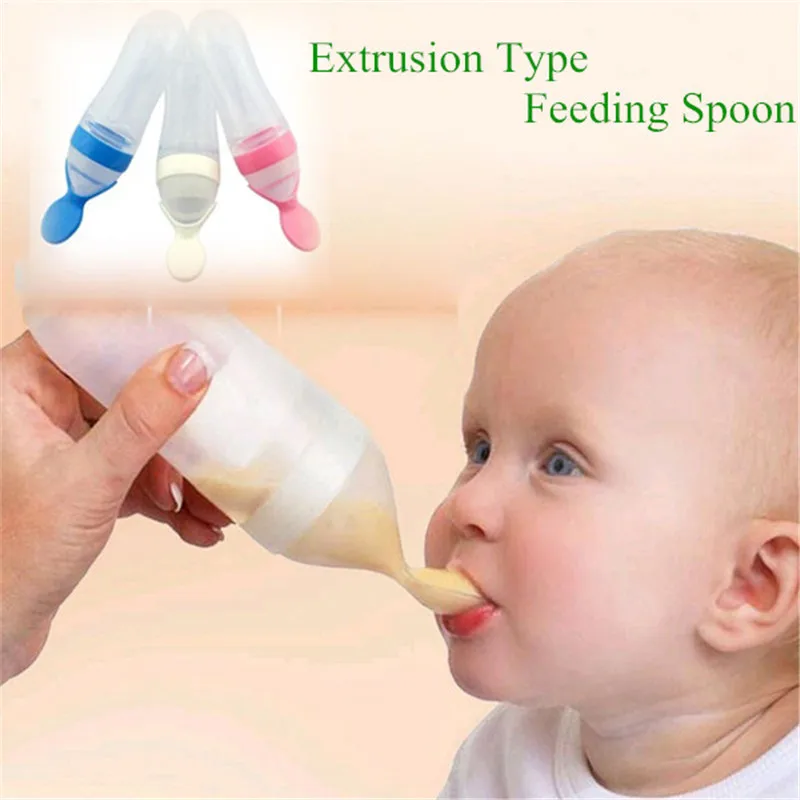 nine0021 Corn. This cereal has no less value than other cereals. Such a porridge is a real storehouse of vegetable protein, minerals and fiber. Experts believe that it is right to introduce it into complementary foods after the child has become acquainted with buckwheat and rice.
nine0021 Corn. This cereal has no less value than other cereals. Such a porridge is a real storehouse of vegetable protein, minerals and fiber. Experts believe that it is right to introduce it into complementary foods after the child has become acquainted with buckwheat and rice.
Read also: Corn porridge for complementary foods
When is it better to introduce cereals and in what order
It is recommended to include cereal dishes in the child’s diet 3-4 weeks after he has already become acquainted with the first complementary foods, vegetables, and is completely used to to them. But sometimes porridge can precede them. For example, a pediatrician may prescribe this product if the baby is not gaining enough weight, has problems with stools (with a tendency to liquefy). In any case, it is better to adhere to a certain sequence of introducing cereals into the children's menu, which the pediatrician will tell about. nine0005
Video: Where to start complementary foods
Author: pediatrician, Ph.D. Komarovsky E.O.
6-7 months. Which porridge should be introduced first? To begin with, you can introduce the baby to gluten-free porridge: buckwheat, rice, corn. Gluten is a vegetable protein gluten that can cause children in the first six months of life (and even a little longer) to have difficulty digesting food. This is due to insufficient production in the gastrointestinal tract of the crumbs of the peptidase enzyme, which is necessary for the normal processing of gluten. The consequences of this can be bloating and pain in the tummy, increased gas formation. In very rare cases, celiac disease occurs. This is a hereditary disease, which is expressed in intolerance to gluten throughout life. The first cereals for children must certainly be dairy-free and monocomponent, consisting of one type of cereal. They should not contain any additional components (salt, sugar, honey, fruit, berry, cream fillers). nine0005
They should not contain any additional components (salt, sugar, honey, fruit, berry, cream fillers). nine0005
7-8 months. Add oatmeal to your baby's diet as a new staple. If the child’s body tolerates familiar cereals well, combine different types of cereals with each other. It is still not recommended to cook the dish with cow's milk. At this age, you can try adding toppings, such as applesauce, to the porridge.
9-10 months. At this age, you can offer the baby wheat, barley porridge. Cereals can also be used as a side dish, mixed with vegetable, meat complementary foods, and also as one of the components of a light children's soup. nine0021 From 12 months. From the year, but not earlier, it is recommended to introduce milk porridges cooked in whole cow's milk. Provided that the crumbs are not allergic to this product. Also at this age, you can already offer your baby to try semolina porridge.
Basic rules for introducing cereals into the baby's menu
1.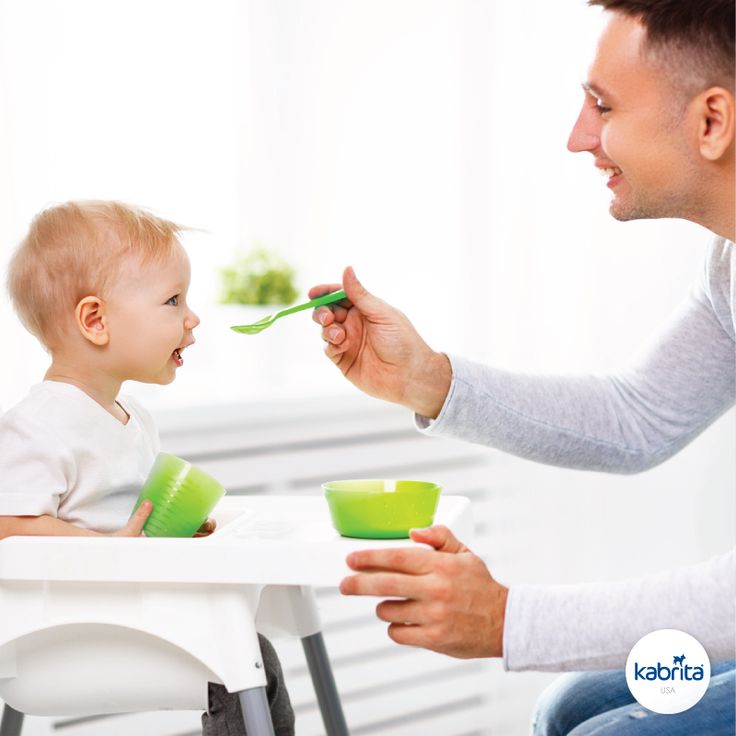 To make it easier for the child to get used to the new product and the consistency of the dish, prepare a fairly liquid porridge at first. For this, 5 g of cereals are required for 100 g of water. nine0021 2. If the product is tolerated normally and the baby likes to eat it, after 7-10 days you can make a thicker concentration - add 10 g of cereal per 100 g of water.
To make it easier for the child to get used to the new product and the consistency of the dish, prepare a fairly liquid porridge at first. For this, 5 g of cereals are required for 100 g of water. nine0021 2. If the product is tolerated normally and the baby likes to eat it, after 7-10 days you can make a thicker concentration - add 10 g of cereal per 100 g of water.
3. The baby should be offered porridge from a spoon. In a number of situations, according to the testimony of a doctor, for example, if the baby is sick or weakened, a bottle with a special nipple is used.
4. The best time to get acquainted with cereals is breakfast. Thanks to this, during the day you can observe the state of health of the baby. It will also be easier to identify an allergic reaction and take the necessary measures immediately. In the morning, the gastrointestinal tract works most actively and enzymes are released that promote the digestion of food and the absorption of substances from it. nine0021 5. After feeding with porridge, while its amount has not yet reached the normative serving value, supplement the baby with breast or adapted milk formula.
After feeding with porridge, while its amount has not yet reached the normative serving value, supplement the baby with breast or adapted milk formula.
6. Keep a food diary, recording types of complementary foods, portion sizes, and reactions of the child's body to new foods, if any (colic, indigestion, weight gain, etc.).
7. About 3 weeks should pass between the acquaintance with two new porridges. This will allow the baby to properly adapt to the product, and you can control how the child's body reacts to it. nine0021 8. The volume of a single serving of porridge should gradually increase as the baby grows older. Indicative figures are: 160-170 ml at 7-8 months, 170-180 ml at 8-9 months. Starting from 9 months, it is already possible to switch to a complete replacement of one feeding with complementary foods in the amount of 200 ml.
It is clear how to introduce porridge into complementary foods by day is shown in the table:0005
The number of finished porridge
1
5 g (1 teaspoon)
2 9000 9000
10 g (2 teaspoons)
3
15 g (3 teaspoons)
4
20 g (4 teaspoons)
50 g
6
100 g
7
150 g
How to cook cereals for baby foods
Cereal foods can be introduced in the form of home-cooked cereals, instant instant powders, as well as in canned form. Let's consider all the options in more detail.
Let's consider all the options in more detail.
Homemade
To prepare porridge for a child, you can use a special baby food flour made from the appropriate cereal. But such a product is not always found in a regular supermarket. A more affordable option is fresh, good quality cereal. Before cooking, it must be cleaned of possible litter and rinsed thoroughly. The following options are available:
• Method 1. Grind the grains in a coffee grinder to a powder. Throw the product into cold or boiling water and cook until tender over low heat.
• Method 2. Cook porridge from unground cereals. Cool to a temperature of 37 degrees and grind with a blender. In the cooled porridge, you can add a little breast milk or mixture (literally 20-30 ml). This will improve its taste and make it even more nutritious.
Cooked cereals
These are specialized products for baby food that help mothers save time on cooking cereals in the traditional way, but at the same time take care of a high-quality, nutritious and varied baby's diet.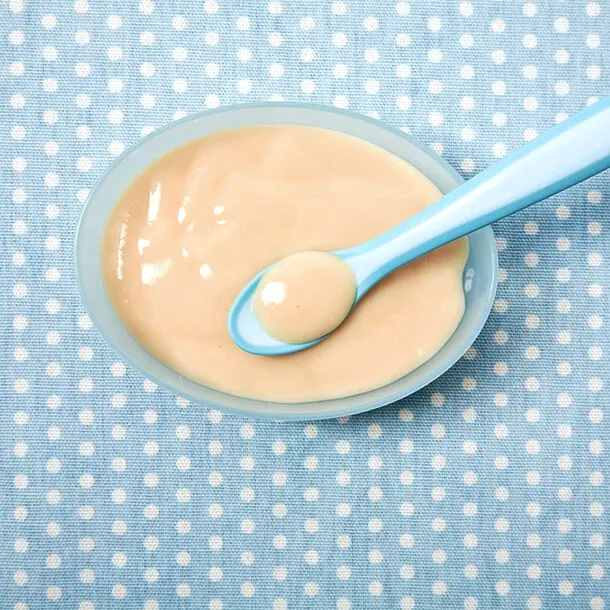
IMPORTANT! The Bebi Premium line includes the entire range of cereals recommended for the first feeding. These are dairy-free and milk porridges, monocomponent and multi-cereal, with fruit, berry, vegetable, creamy components. They are:
• made from certified raw materials; nine0021 • have a balanced composition;
• additionally enriched with prebiotics.
Freshly boiled water is used to make porridge. The optimal proportions of liquid and powder for the appropriate age of the child are usually indicated on the product box.
Porridges in jars
When the baby is already well acquainted with porridge and other types of complementary foods, you can give him canned foods in jars as a second food. Such products contain cereals with fruit or vegetable puree, with the addition of milk. Contains no salt and sugar. This is a convenient way to provide the baby with the necessary nutrition during trips and travels. nine0005
Important Rules
The main thing that all specialists from the Russian Research Institute of Nutrition of the Russian Academy of Medical Sciences and the World Health Organization (WHO) agree on is that complementary foods should not be forced! If you see: the child categorically does not eat what is offered, leave this idea for at least a week. This is a sure indicator that it is for your baby that the time for complementary foods has not yet come. What do we have to do? Form the first food interest. How? Sit on your knees when you eat yourself, show food, dishes. Children learn quickly and adopt your habits and your eating behavior. Listen to your baby! nine0005
This is a sure indicator that it is for your baby that the time for complementary foods has not yet come. What do we have to do? Form the first food interest. How? Sit on your knees when you eat yourself, show food, dishes. Children learn quickly and adopt your habits and your eating behavior. Listen to your baby! nine0005
#First food #Complementary food
Diet for a 4-6 month old baby
Your baby is already 4 months old. He has noticeably grown up, become more active, is interested in objects that fall into his field of vision, carefully examines and reaches for them. The emotional reactions of the child have become much richer: he joyfully smiles at all the people whom he often sees more and more often, makes various sounds.
Are you still breastfeeding your baby or have you switched to formula or formula feeding? The child is actively growing, and only with breast milk or infant formula, he can no longer always get all the necessary nutrients. And that means it's time to think about complementary foods. nine0005
nine0005
The optimal time to start its introduction is between 4 and 6 months, regardless of whether the baby is receiving breast milk or formula. This is the time when children respond best to new foods. Up to 4 months, the child is not yet ready to perceive and digest any other food. And with the late introduction of complementary foods - after 6 months, children already have significant deficiencies of individual nutrients and, first of all, micronutrients (minerals, vitamins, long-chain polyunsaturated fatty acids, etc.). In addition, toddlers at this age often refuse new foods, they have delayed development of chewing skills for thick foods, and inadequate eating habits are formed. It is important to know that, no matter how strange it may seem at first glance, with a delayed appointment of complementary foods, allergic reactions more often occur on them. nine0005
When is it advisable to introduce complementary foods as early as 4 months, and when can you wait until 5.5 or even 6 months? To resolve this issue, be sure to consult a pediatrician.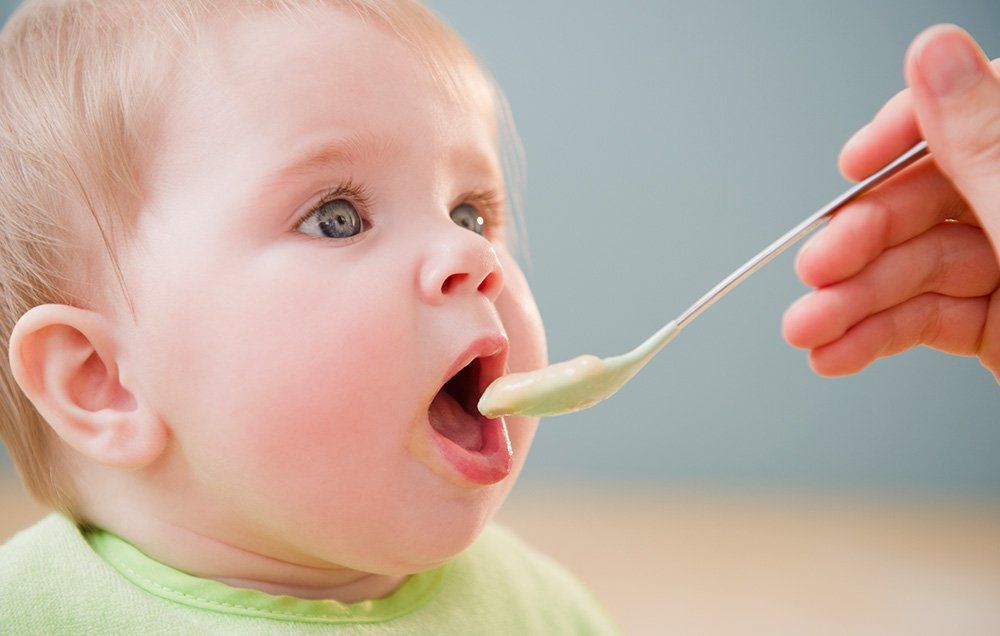
As a rule, at an earlier age (4 - 4.5 months), complementary foods are introduced to children at risk of developing iron deficiency anemia, as well as children with insufficient weight gain and with functional digestive disorders.
The optimal time to start introducing complementary foods to a healthy baby is between 5 and 5.5 months of age. nine0005
The World Health Organization recommends that breastfed babies should be introduced to complementary foods from 6 months of age. From the point of view of domestic pediatricians, which is based on extensive practical experience and scientific research, this is possible only in cases where the child was born on time, without malnutrition (since in these cases the mineral reserves are very small), he is healthy, grows well and develops. In addition, the mother should also be healthy, eat well and use either specialized enriched foods for pregnant and lactating women, or vitamin and mineral complexes in courses. Such restrictions are associated with the depletion of iron stores even in a completely healthy child by 5-5. 5 months of age and a significant increase in the risk of anemia in the absence of complementary foods rich or fortified with iron. There are other deficits as well. nine0005
5 months of age and a significant increase in the risk of anemia in the absence of complementary foods rich or fortified with iron. There are other deficits as well. nine0005
The first complementary food can be vegetable puree or porridge, it is better to give fruit puree to the baby later - after tasty sweet fruits, children usually eat vegetable puree and cereals worse, often refuse them altogether.
Where is the best place to start? In cases where the child has a tendency to constipation or he puts on weight too quickly, preference should be given to vegetables. With a high probability of developing anemia, unstable stools and small weight gains - from baby cereals enriched with micronutrients. And if you started introducing complementary foods with cereals, then the second product will be vegetables and vice versa. nine0005
If the first complementary foods are introduced at 6 months, it must be baby porridge enriched with iron and other minerals and vitamins, the intake of which with breast milk is no longer enough.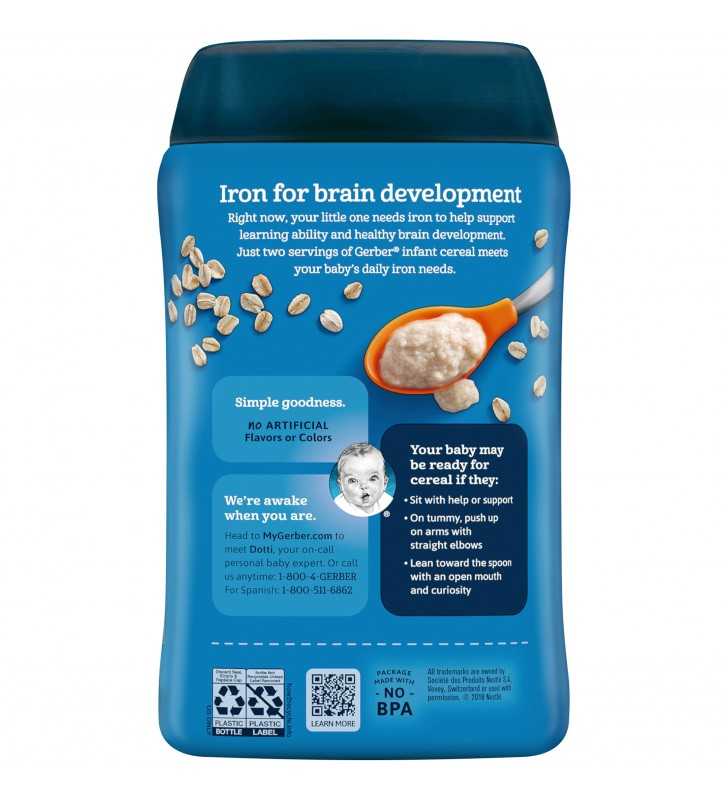
Another important complementary food product is mashed meat. It contains iron, which is easily absorbed. And adding meat to vegetables improves the absorption of iron from them. It is advisable to introduce meat puree to a child at the age of 6 months. Only the daily use of children's enriched porridge and meat puree can satisfy the needs of babies in iron, zinc and other micronutrients. nine0005
But it is better to introduce juices later, when the child already receives the main complementary foods - vegetables, cereals, meat and fruits. After all, complementary foods are needed so that the baby receives all the substances necessary for growth and development, and there are very few in their juices, including vitamins and minerals.
Juices should not be given between feedings, but after the child has eaten porridge or vegetables with meat puree, as well as for an afternoon snack. The habit of drinking juice between meals leads to frequent snacking in the future, a love of sweets is instilled, children have more tooth decay and an increased risk of obesity. nine0005
nine0005
With the start of the introduction of complementary foods, the child is gradually transferred to a 5-time feeding regimen.
Rules for the introduction of complementary foods:
- preference should be given to baby products of industrial production, they are made from environmentally friendly raw materials, have a guaranteed composition and degree of grinding
- Complementary foods should be offered to the baby by spoon at the start of feeding, before breastfeeding (formula feeding)
- the volume of the product increases gradually, starting with ½ - 1 spoon, and in 7 - 10 days we bring it to the age norm, subsequent products within the same group (cereals from other cereals or new vegetables)
- can be entered faster, in 5 - 7 days
- start introduction with monocomponent products
- it is undesirable to give a new product in the afternoon, it is important to follow how the child reacts to it
- new products are not introduced in the event of acute illnesses, and before and immediately after prophylactic vaccination (should be abstained for several days)
When introducing a new type of complementary food, first try one product, gradually increasing its amount, and then gradually “dilute” this product with a new one. For example, vegetable complementary foods can be started with a teaspoon of zucchini puree. During the week, give the baby only this product, gradually increasing its volume. After a week, add a teaspoon of mashed broccoli or cauliflower to the zucchini puree and continue to increase the total volume every day. Vegetable puree from three types of vegetables will be optimal. The portion should correspond to the age norm. Over time, you can replace the introduced vegetables with others faster. nine0005
For example, vegetable complementary foods can be started with a teaspoon of zucchini puree. During the week, give the baby only this product, gradually increasing its volume. After a week, add a teaspoon of mashed broccoli or cauliflower to the zucchini puree and continue to increase the total volume every day. Vegetable puree from three types of vegetables will be optimal. The portion should correspond to the age norm. Over time, you can replace the introduced vegetables with others faster. nine0005
After the introduction of one vegetable (bringing its volume to the required amount), you can proceed to the intake of porridge, and diversify the vegetable diet later.
If the child did not like the dish, for example, broccoli, do not give up on your plan and continue to offer this vegetable in a small amount - 1-2 spoons daily, you can not even once, but 2-3 times before meals, and after 7 - 10, and sometimes 15 days, the baby will get used to the new taste. This diversifies the diet, will help to form the right taste habits in the baby.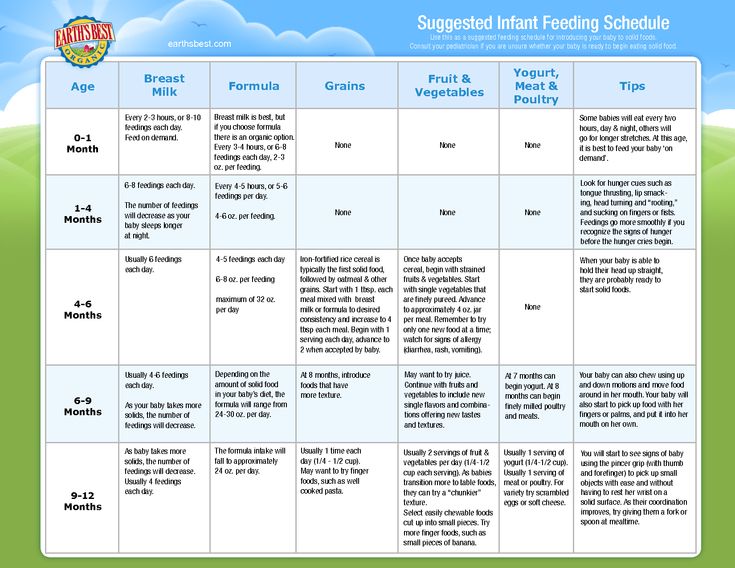 nine0005
nine0005
Spoon-feeding should be done with patience and care. Forced feeding is unacceptable!
In the diet of healthy children, porridge, as a rule, is introduced after vegetables (with the exception of healthy children who are breastfed, when complementary foods are introduced from 6 months). It is better to start with dairy-free gluten-free cereals - buckwheat, corn, rice. At the same time, it is important to use porridge for baby food of industrial production, which contains a complex of vitamins and minerals. In addition, it is already ready for use, you just need to dilute it with breast milk or the mixture that the baby receives. nine0005
Children suffering from food allergies are introduced complementary foods at 5-5.5 months. The rules for the introduction of products are the same as for healthy children, in all cases it is introduced slowly and begins with hypoallergenic products. Be sure to take into account individual tolerance. The difference is only in the correction of the diet, taking into account the identified allergens. From meat products, preference should first be given to mashed turkey and rabbit.
From meat products, preference should first be given to mashed turkey and rabbit.
Diets for different age periods
Explain how you can make a diet, it is better to use a few examples that will help you navigate in compiling a menu specifically for your child.
From 5 months, the volume of one feeding is on average 200 ml.
Option 1.
If your baby started receiving complementary foods from 4-5 months, then at 6 months his diet should look like this:
| Breast milk or VHI* | 200 ml | |
| II feeding 10 hours | Dairy-free porridge** Supplementation with breast milk or VHI* | 150 g 50 ml |
| III feeding 14 hours | Vegetable puree Meat puree Vegetable oil Supplemental breast milk or VHI* | 150 g 5 - 30 g 1 tsp 30 ml |
| IV feeding 18 hours | Fruit puree Breast milk or VHI* | 60 g 140 ml |
| V feeding 22 hours | Breast milk or VHI* | 200 ml |
* - infant formula
** - diluted with breast milk or VHI
Option 2.
* - infant formula Option 3. ** - diluted with breast milk Up to 7 months, increase the volume of porridge and vegetable puree to 150 g and introduce fruit puree. I feeding
6 hours Breast milk or VHI* 200 ml II feeding
10 hours Dairy-free porridge**
Fruit puree 150 g
20 g III feeding
14 hours Vegetable puree
Meat puree Vegetable oil
Fruit juice 150 g
5 - 30 g
1 tsp
60 ml IV feeding
18 hours Fruit puree
Breast milk or VHI* 40 g
140 ml V feeding
22 hours Breast milk or VHI* 200 ml
** - diluted with breast milk or VHI  :
:
I feeding
6 hours Breast milk II feeding
10 hours Dairy-free porridge**
Breast milk supplement 100 g III feeding
14 hours Vegetable puree
Meat puree Vegetable oil
Breast milk supplement 100 g
5 - 30 g
1 tsp IV feeding
18 hours Breast milk V feeding nine0299 Breast milk
22 hours 
.

